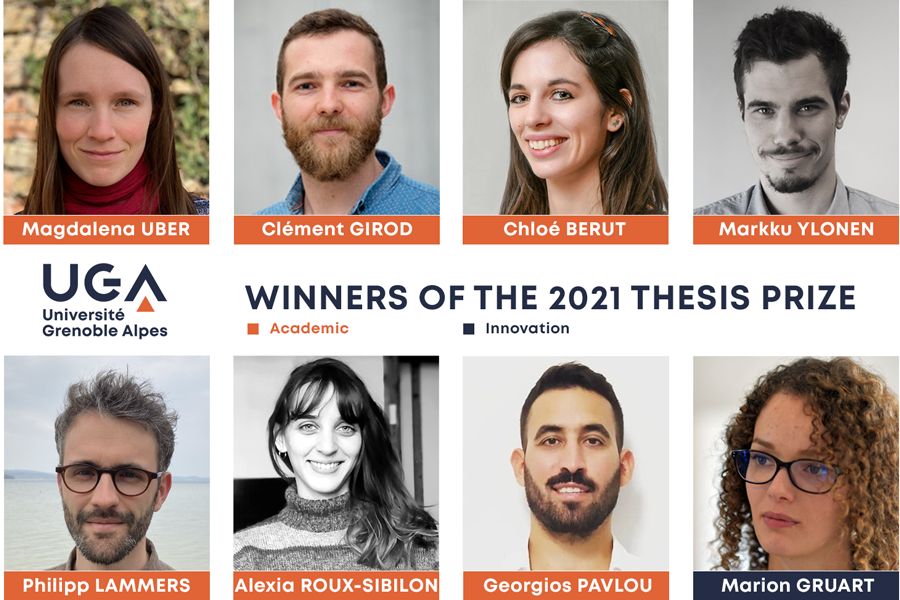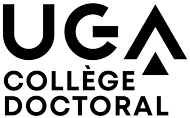The Université Grenoble Alpes has honored eight PhD students who graduated in 2020 and whose thesis work was judged to be of exceptional quality. Seven academic thesis prizes and one innovation thesis prize were attributed on May 11 and 18. The awards will be presented at the " PhD Ceremony " on June 22, 2021.
The thirteen Université Grenoble Alpes doctoral schools previously selected the candidates and the juries had the difficult task of choosing between them, as the applications were of very high quality.
The juries for the Innovation Thesis Prize and the Academic Thesis Prize were held on May 11 and 18, respectively, and the prizes will be officially awarded at the " PhD Ceremony " on June 22, 2021, starting at 5:30 pm.
Recognizing the scientific excellence of our PhD students
The Université Grenoble Alpes has honored eight PhD students who graduated in 2020 and whose thesis work was judged to be of exceptional quality. These awards recognize the excellence of the research carried out by these young scientists in their respective laboratories.
The prizes are divided into 2 categories:
- the Academic Thesis Prize, awarded to seven people based on criteria of excellence specific to each disciplinary field and represented by the 13 doctoral schools on the site;
- the Innovation Thesis Prize, awarded to research work of exceptional quality both in terms the candidate's approach and plans for its promotion and dissemination. This prize has been in existence since 2018.
Winners of the Academic Thesis Prize:
Chloé BERUT: "Gears of influence: the selective use of European Union instruments in domestic eHealth policy-making"
 The aim of this PhD thesis is to understand how the European Union (EU) may affect domestic eHealth politics and policies, despite its lack of competence in this area. The analysis shows that EU influence is likely to be observed in the content of public policies, or within power games between eHealth policy actors. In this respect, three cases (France, Austria, and Ireland) are explored, using a comparative and qualitative analysis. While the role of the EU in eHealth becomes more and more visible (creation of the Digital Green pass), this thesis is useful as it brings to light the various mechanisms through which this organisation might become an active player of domestic health policies, despite an historical resistance from member states.
The aim of this PhD thesis is to understand how the European Union (EU) may affect domestic eHealth politics and policies, despite its lack of competence in this area. The analysis shows that EU influence is likely to be observed in the content of public policies, or within power games between eHealth policy actors. In this respect, three cases (France, Austria, and Ireland) are explored, using a comparative and qualitative analysis. While the role of the EU in eHealth becomes more and more visible (creation of the Digital Green pass), this thesis is useful as it brings to light the various mechanisms through which this organisation might become an active player of domestic health policies, despite an historical resistance from member states.
Keywords: European Union, Health policy, Europeanisation, Soft law, Multiple Streams Framework, Comparative Analysis
Doctoral school: ED SHPT - Humanities, Political and Territorial Sciences
Host laboratory: Pacte - Laboratoire de sciences sociales (CNRS/UGA – Sciences Po Grenoble-UGA)
Thesis supervisors: Sabine SAURUGGER
Clément GIROD : "Low temperature specific heat in the normal state of cuprate superconductors"
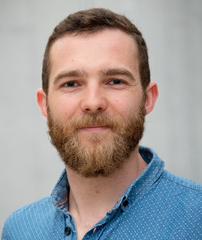 This thesis focuses on the thermodynamic properties of cuprates superconductors in the normal state induced when high magnetic fields are applied. In these materials, superconductivity emerges inside a complex phase diagram. Moreover, its origin, its unconventional properties as well as its interplay with the neighbouring phases are still a puzzle after more than three decades. This experimental thesis studies the phase diagram of these materials, with an emphasis on the charge-ordered and pseudogap regions. In particular, this work shows that the specific heat in the vicinity of the pseudogap transition exhibits a universal behaviour, usually observed close to quantum critical points. Moreover, this thesis brings out new elements about the nature of the Fermi surface inside the charge-ordered phase.
This thesis focuses on the thermodynamic properties of cuprates superconductors in the normal state induced when high magnetic fields are applied. In these materials, superconductivity emerges inside a complex phase diagram. Moreover, its origin, its unconventional properties as well as its interplay with the neighbouring phases are still a puzzle after more than three decades. This experimental thesis studies the phase diagram of these materials, with an emphasis on the charge-ordered and pseudogap regions. In particular, this work shows that the specific heat in the vicinity of the pseudogap transition exhibits a universal behaviour, usually observed close to quantum critical points. Moreover, this thesis brings out new elements about the nature of the Fermi surface inside the charge-ordered phase.
Keywords: Superconductivity, Phase transitions, Specific heat, Low temperature, High magnetic field
Doctoral school: Physics
Host laboratory: Institut Néel (CNRS)
Thesis supervisors: Thierry KLEIN et Christophe MARCENAT (co-supervisor) and Louis TAILLEFER (joint supervisor with Sherbrooke University, Canada)
Philipp LAMMERS : "In the rear guard of history. Stendhal and the reception of memoirs."
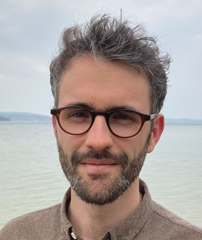 The reception of the Memoirs is of great significance in the poetics of contemporary history that Stendhal puts into practice in his writing, placed "in the rearguard of history" in more than one respect: after the end of the great historical events during the Revolution and the reign of Napoleon, the writer offers a particular view of history. His narratives are situated in the wake of other narratives, historical and biographical, which give his work a critical depth. Memoirs are a contemporary ideal of (subjective) narrative, which both historians and writers draw on. Stendhal's work is in its various parts a work on contemporary history and on memoirs. In this respect, the reception of memoirs, the way in which Stendhal treats historical testimony and authorship, and the contemporary poetics of the novel are of major significance for understanding Stendhal's work. The thesis focuses on the questions of reception of the Memoirs, the image of the author and the image of the historical actor in the face of the memorialists of Stendhal's time, as well as on the poetics of the Stendhalian novel.
The reception of the Memoirs is of great significance in the poetics of contemporary history that Stendhal puts into practice in his writing, placed "in the rearguard of history" in more than one respect: after the end of the great historical events during the Revolution and the reign of Napoleon, the writer offers a particular view of history. His narratives are situated in the wake of other narratives, historical and biographical, which give his work a critical depth. Memoirs are a contemporary ideal of (subjective) narrative, which both historians and writers draw on. Stendhal's work is in its various parts a work on contemporary history and on memoirs. In this respect, the reception of memoirs, the way in which Stendhal treats historical testimony and authorship, and the contemporary poetics of the novel are of major significance for understanding Stendhal's work. The thesis focuses on the questions of reception of the Memoirs, the image of the author and the image of the historical actor in the face of the memorialists of Stendhal's time, as well as on the poetics of the Stendhalian novel.
Keywords: Restauration, History, Novel, Memoirs, Stendhal
Doctoral school: Languages, Literature and Human Sciences
Host laboratory: Litt&Arts - Arts & Pratiques du Texte, de l'Image, de l'Ecran & de la Scène (CNRS/UGA)
Thesis supervisors: Catherine MARIETTE CLOT and Ulrike SPRENGER (joint supervisor with Konstanz university, Germany)
Georgios PAVLOU : "Toxoplasma gondii, a super fast runner and cell invader. Studying motion and forces"
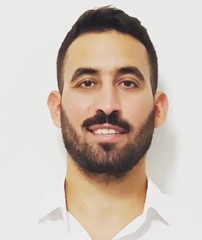 My thesis work has shed light on the key molecular mechanisms at the center of the motile and invasive properties of the parasite Toxoplasma gondii. The latter has an arched shape, with an asymmetrical architecture based on an apical pole and a basal pole. It moves unidirectionally across a substrate, apical pole forward at exceptional migration speeds before propelling itself into a cell and producing offspring there. By combining different types of microscopy, it was possible to decipher how the parasite periodically rests on the surface and uses a "spring" system that directs the propulsion in a particular helical motion. These imaging and biophysical approaches have also made it possible to identify and elucidate the torsion exerted by the parasite on the invasive nanodevice which serves as a gateway to access its host cell and to develop a replicative niche.
My thesis work has shed light on the key molecular mechanisms at the center of the motile and invasive properties of the parasite Toxoplasma gondii. The latter has an arched shape, with an asymmetrical architecture based on an apical pole and a basal pole. It moves unidirectionally across a substrate, apical pole forward at exceptional migration speeds before propelling itself into a cell and producing offspring there. By combining different types of microscopy, it was possible to decipher how the parasite periodically rests on the surface and uses a "spring" system that directs the propulsion in a particular helical motion. These imaging and biophysical approaches have also made it possible to identify and elucidate the torsion exerted by the parasite on the invasive nanodevice which serves as a gateway to access its host cell and to develop a replicative niche.
Keywords: Cell invasion, Membrane dynamics , Protozoan parasite, Microscopy, Force, Migration, Toxoplasma gondii
Doctoral school: Chemistry and Life Sciences
Host laboratory: IAB - Institute for Advanced Biosciences (CNRS/Inserm/UGA)
Thesis supervisor: Isabelle TARDIEUX
Alexia ROUX-SIBILON : "Visual recognition: Study of the influence of peripheral vision in a predictive spatial frequency based model"
 This thesis proposes to consider peripheral vision in "predictive" theories of visual perception. The results show that visual processing is facilitated when coherent information is present in the peripheral visual field. The data obtained by testing both healthy subjects and ophthalmic patients with glaucoma, whose peripheral vision is impaired, point to an essential role of peripheral vision in an efficient vision system.
This thesis proposes to consider peripheral vision in "predictive" theories of visual perception. The results show that visual processing is facilitated when coherent information is present in the peripheral visual field. The data obtained by testing both healthy subjects and ophthalmic patients with glaucoma, whose peripheral vision is impaired, point to an essential role of peripheral vision in an efficient vision system.
Keywords: Predictive coding, Glaucoma, Peripheral vision, Scene perception
Doctoral school: Health, cognition and environmental engineering
Host laboratory: LPNC - Laboratoire de Psychologie et Neuro Cognition (CNRS/UGA/USMB)
Thesis supervisor: Carole PEYRIN
Magdalena UBER: "Suspended sediment production and transfer in mesoscale catchments: a new approach combining flux monitoring, fingerprinting and distributed numerical modeling"
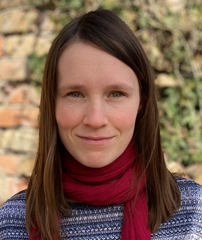 The study of soil erosion and transport of eroded particles towards rivers revealed crucial environmental and socio-economic issues. These are especially important given the increased pressure on soil and water resources under climate change and a growing world population. The objective of the thesis was to understand how the locations of erosion zones as well as rainfall variability control hydro-sedimentary dynamics in two mesoscale Mediterranean rivers, the Claduègne and the Galabre. Two approaches were developed to trace the origins and the transfer of sediments from hillslopes to rivers: By means of physico-chemical measurements on soil and sediment samples as well as by physically-based, numerical modelling. The combination of the two methodologies has a high potential for understanding where the sediments that are transported in rivers come from and where they will depose.
The study of soil erosion and transport of eroded particles towards rivers revealed crucial environmental and socio-economic issues. These are especially important given the increased pressure on soil and water resources under climate change and a growing world population. The objective of the thesis was to understand how the locations of erosion zones as well as rainfall variability control hydro-sedimentary dynamics in two mesoscale Mediterranean rivers, the Claduègne and the Galabre. Two approaches were developed to trace the origins and the transfer of sediments from hillslopes to rivers: By means of physico-chemical measurements on soil and sediment samples as well as by physically-based, numerical modelling. The combination of the two methodologies has a high potential for understanding where the sediments that are transported in rivers come from and where they will depose.
Keywords: Rainfall, Soil erosion, Suspended sediment transport, Connectivity, Sediment fingerprinting, Distributed modeling
Doctoral school: Earth, Environmental and Planetary Sciences
Host laboratory: IGE – Institut des géosciences et de l’environnement (CNRS/IRD/UGA – Grenoble INP-UGA)
Thesis supervisors: Cédric LEGOUT and Guillaume NORD (co-supervisor)
Markku YLONEN : "Cavitation erosion monitoring by acoustic emission"
 Cavitation is the formation of vapor bubbles either in a static liquid or in a liquid flow due to a drop in static pressure. When these bubbles collapse, as a result of pressure recovery, they may damage adjacent surfaces. These events are major causes of damage and nuisance in hydro machines. Modern hydro turbines are often used to regulate power grids; therefore, they may be operated out of their designed range. The flow-related optimal operation is different from the economic optimal usage. Detecting and characterizing cavitation and assessing damage during operation can be difficult or even impossible. Acoustic emission (AE) measurements provide a way to measure cavitation without access to the flow, but interpreting the data is challenging. This thesis presents insights in the ways of treating the AE data both in characterizing individual pits created by cavitation impacts and in tracking the evolution of cavitation erosion. Additionally, the erosion rates of three turbine materials were compared, and the main reasons behind the differing erosion rates of two martensitic turbine steels were discovered. The same high-speed cavitation tunnel was used in all cavitation experiments. This thesis firstly presents a method for enveloping an AE waveform signal and for counting the peak voltage values. The resulting cumulative distributions were compared to those of cavitation pit diameters, and from this comparison, a connection was proposed between AE peak voltage value and pit diameter. The second result was the connection between cavitation cloud shedding frequency and erosion evolution. The process of demodulating high frequency AE signals effectively promotes the low frequency shedding. The shedding frequency increased with accumulating material loss, and it was concluded that this increase is due to geometry effects, namely surface roughness. In addition to the two proposed methods, it was found that the decisive factors in the differing erosion rates of the martensitic stainless steels are the prior austenite grain size, packet and block sizes and the retained austenite fraction. This thesis provides guidelines directly applicable, such as the martensitic steel classifying, and methods that require further development, if one wishes to utilize them in hydro machine cavitation monitoring instead of laboratory measurements in a cavitation tunnel. The main outcome is that AE is a potential way to monitor cavitation, with the important benefit of not requiring any access to the flow.
Cavitation is the formation of vapor bubbles either in a static liquid or in a liquid flow due to a drop in static pressure. When these bubbles collapse, as a result of pressure recovery, they may damage adjacent surfaces. These events are major causes of damage and nuisance in hydro machines. Modern hydro turbines are often used to regulate power grids; therefore, they may be operated out of their designed range. The flow-related optimal operation is different from the economic optimal usage. Detecting and characterizing cavitation and assessing damage during operation can be difficult or even impossible. Acoustic emission (AE) measurements provide a way to measure cavitation without access to the flow, but interpreting the data is challenging. This thesis presents insights in the ways of treating the AE data both in characterizing individual pits created by cavitation impacts and in tracking the evolution of cavitation erosion. Additionally, the erosion rates of three turbine materials were compared, and the main reasons behind the differing erosion rates of two martensitic turbine steels were discovered. The same high-speed cavitation tunnel was used in all cavitation experiments. This thesis firstly presents a method for enveloping an AE waveform signal and for counting the peak voltage values. The resulting cumulative distributions were compared to those of cavitation pit diameters, and from this comparison, a connection was proposed between AE peak voltage value and pit diameter. The second result was the connection between cavitation cloud shedding frequency and erosion evolution. The process of demodulating high frequency AE signals effectively promotes the low frequency shedding. The shedding frequency increased with accumulating material loss, and it was concluded that this increase is due to geometry effects, namely surface roughness. In addition to the two proposed methods, it was found that the decisive factors in the differing erosion rates of the martensitic stainless steels are the prior austenite grain size, packet and block sizes and the retained austenite fraction. This thesis provides guidelines directly applicable, such as the martensitic steel classifying, and methods that require further development, if one wishes to utilize them in hydro machine cavitation monitoring instead of laboratory measurements in a cavitation tunnel. The main outcome is that AE is a potential way to monitor cavitation, with the important benefit of not requiring any access to the flow.
Keywords: Cavitation erosion monitoring, Acoustic emission
Doctoral school: Engineering - Materials, Mechanical, Environment, Energetics, Processes, Production
Host laboratory: LEGI - Laboratoire des écoulements géophysiques et industriels (CNRS/UGA – Grenoble INP-UGA)
Thesis supervisors: Marc FIVEL and Kari KOSKINEN (joint supervisor with Tampere University, Finland)
Winner of the Innovation Thesis Prize:
Marion GRUART : "Elaboration and properties of InGaN-based nanowires for the realization of micro- and nanoLEDs"
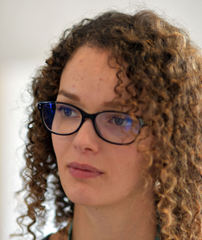 III-N semi-conductors, including GaN, AlN, InN and their alloys, are now firmly established as a current solution for solid state lighting and related applications due to their direct band gaps ranging from deep UV to IR (6,14 eV to 0,64 eV). Since the realization of InGaN/GaN quantum wells based blue LEDs, rewarded by the 2014 Nobel Prize in physics, InGaN based visible LEDs have emerged as a prime candidate for lighting applications. However, one of the main challenges for the fabrication of III-N based devices is the large lattice mismatch between the III-N epilayers and the available substrates. Consequently, a high density of extended defects is induced by plastic relaxation, drastically decreasing the LEDs’ efficiency. Semiconductor nanowires are intensely studied for the realization of high efficacity axial heterostructures, due to the greatly eased elastic strain relaxation resulting from their large aspect ratio. With the aim of realizing red emitting InGaN based LEDs and overcome the green gap issue, this PhD work is mainly focused on the growth of InGaN/GaN nanowires and micro-columns with high In content (approximately 35%In). This thesis led to the filing of 4 patents and the integration of Marion GRUART in the high-tech company Aledia.
III-N semi-conductors, including GaN, AlN, InN and their alloys, are now firmly established as a current solution for solid state lighting and related applications due to their direct band gaps ranging from deep UV to IR (6,14 eV to 0,64 eV). Since the realization of InGaN/GaN quantum wells based blue LEDs, rewarded by the 2014 Nobel Prize in physics, InGaN based visible LEDs have emerged as a prime candidate for lighting applications. However, one of the main challenges for the fabrication of III-N based devices is the large lattice mismatch between the III-N epilayers and the available substrates. Consequently, a high density of extended defects is induced by plastic relaxation, drastically decreasing the LEDs’ efficiency. Semiconductor nanowires are intensely studied for the realization of high efficacity axial heterostructures, due to the greatly eased elastic strain relaxation resulting from their large aspect ratio. With the aim of realizing red emitting InGaN based LEDs and overcome the green gap issue, this PhD work is mainly focused on the growth of InGaN/GaN nanowires and micro-columns with high In content (approximately 35%In). This thesis led to the filing of 4 patents and the integration of Marion GRUART in the high-tech company Aledia.
Keywords : Nitride materials, Light emitting diodes, Nanowires, InGaN, Molecular beam epitaxy
Doctoral school: Physics
Host laboratory : PHELIQS- Laboratoire de photonique, éLectronique et ingéniérie quantiques (CEA/UGA)
Thesis supervisors: Bruno DAUDIN et Bruno GAYRAL
